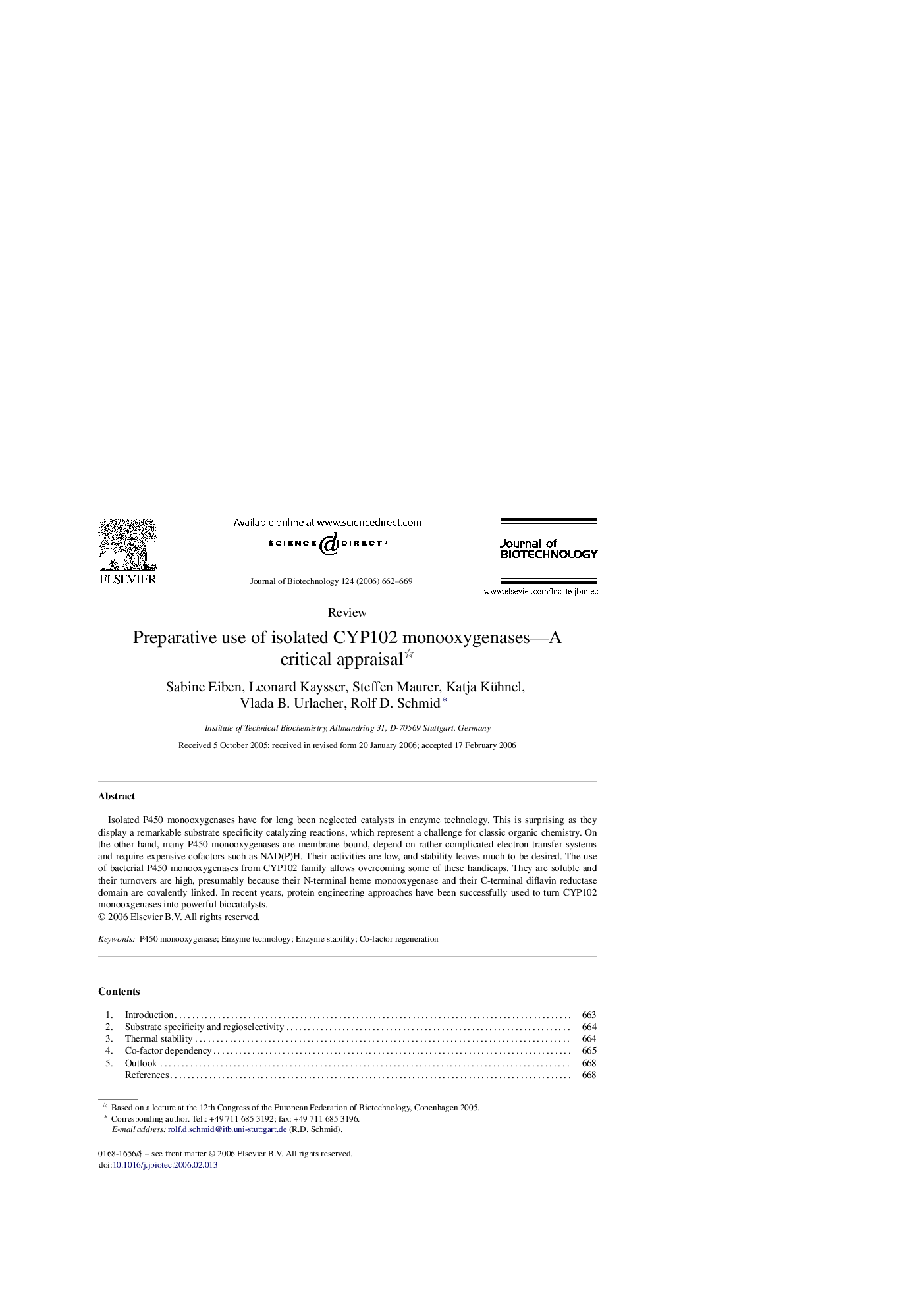| Article ID | Journal | Published Year | Pages | File Type |
|---|---|---|---|---|
| 25336 | Journal of Biotechnology | 2006 | 8 Pages |
Isolated P450 monooxygenases have for long been neglected catalysts in enzyme technology. This is surprising as they display a remarkable substrate specificity catalyzing reactions, which represent a challenge for classic organic chemistry. On the other hand, many P450 monooxygenases are membrane bound, depend on rather complicated electron transfer systems and require expensive cofactors such as NAD(P)H. Their activities are low, and stability leaves much to be desired. The use of bacterial P450 monooxygenases from CYP102 family allows overcoming some of these handicaps. They are soluble and their turnovers are high, presumably because their N-terminal heme monooxygenase and their C-terminal diflavin reductase domain are covalently linked. In recent years, protein engineering approaches have been successfully used to turn CYP102 monooxgenases into powerful biocatalysts.
